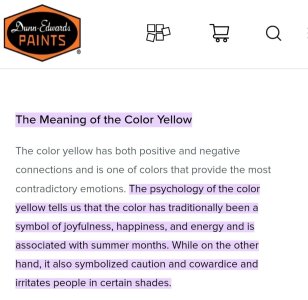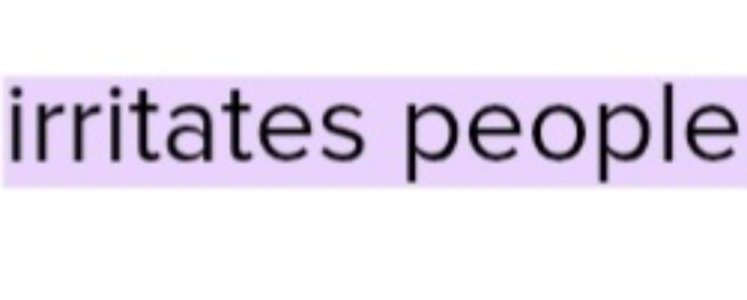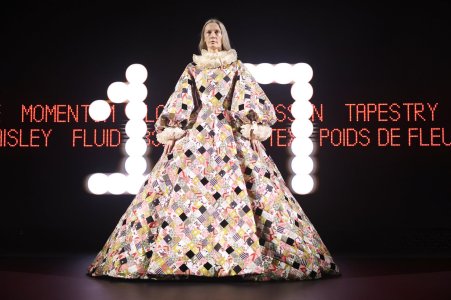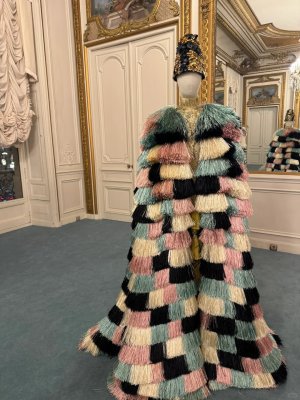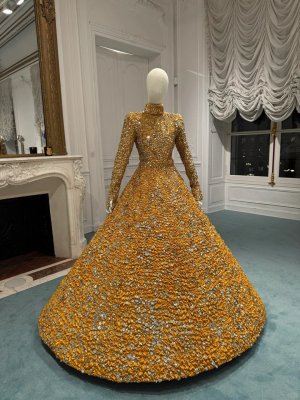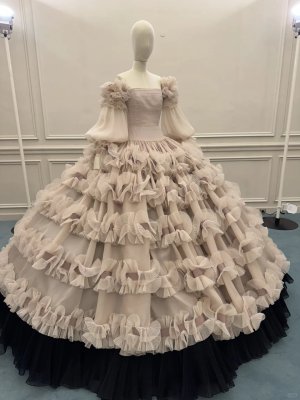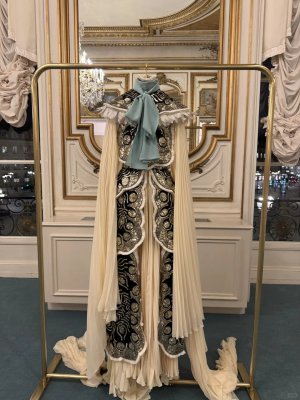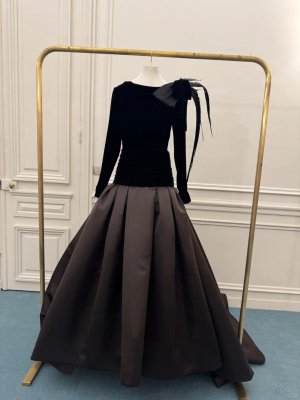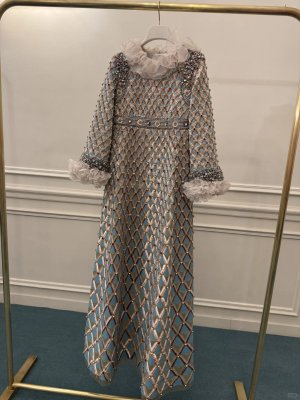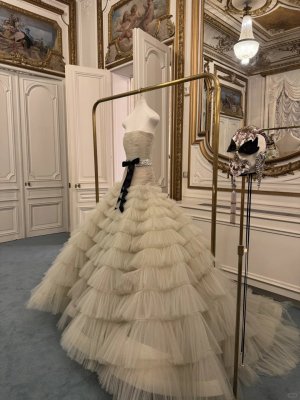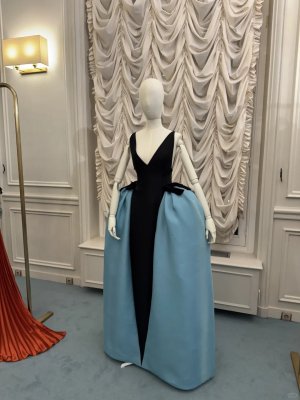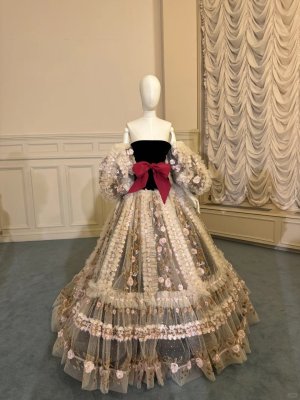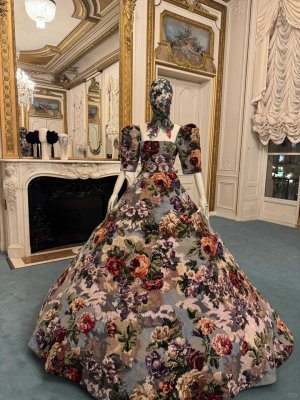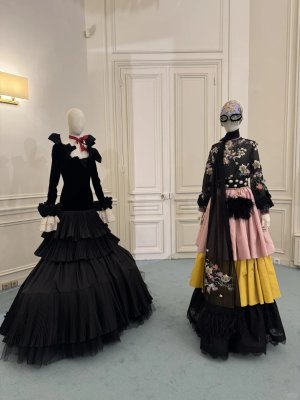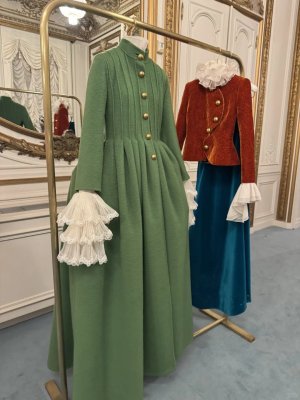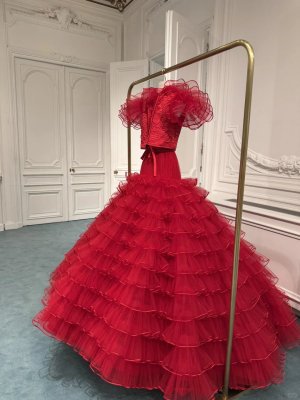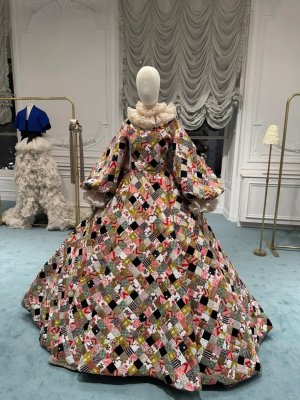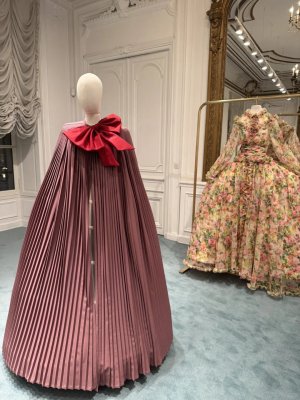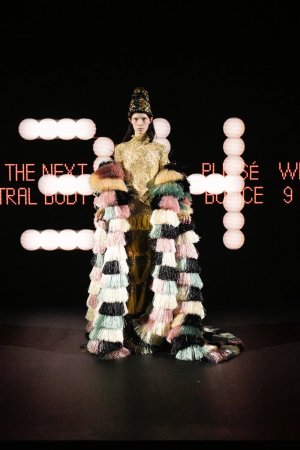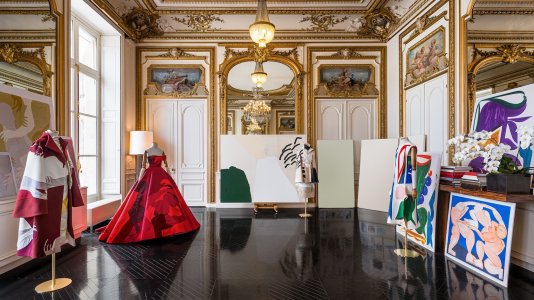Cathy Horyn's Review :
Valentino, Everything Everywhere All at Once
Alessandro Michele’s first couture collection was a sensorial overload — but can we turn on the lights?
By Cathy Horyn, the Cut’s fashion critic-at-large since 2015.
Alessandro Michele showed his first haute-couture offering for Valentino and it was, as they say, very Valentino. The 48-piece collection had the bows, the ruffles, the pleats, and the rich ladylike elegance. If one looked back through all of Valentino Garavani’s collections — he began in Rome in 1960 — one could probably find a harlequin pattern or something like a peasant dress. Michele showed a cape with a many-hued grid of thick, bristly fringe. Curious if this detail had a Val precedent, I went back to one of my favorite Garavani collections, the July 2007 anniversary party in Rome, and there it was: thick tufts of pink, rose, and orange feathers as trim on a beaded ivory cocktail dress. The effect was almost the same.
The only difference was that Michele just blew everything up, and magnified the details or the shapes into his idea of a conceptual fantasy. He took something very Valentino — say, a high-necked, long-sleeved day dress and, using a crinoline, enlarged it to a ball gown in crinkled, sequin-studded yellow satin. Demna has done similar feats at Balenciaga. Remember the extreme, bell-shaped gowns that closed his so-called “power dressing” show in 2019? And that’s only one example of how designers can manipulate a style to transform it. They’ve been doing it for well over a century. Artists, too.
It was not that Michele was simply playing with chic signifiers on Wednesday in Paris. There were clear references to the 18th century (those panniers), the movies, and Venice at carnival time (the elaborate masks worn by some of the models). The level of craft detail, and the richness of the colors, was remarkable.
But did it matter if you couldn’t really see anything? This was one of the most puzzling, self-indulgent exercises I’ve seen in fashion since, well, I can’t remember when. And it’s a pity because I think Michele was truly on to a good idea, both in terms of the show concept and the clothes. But either he didn’t adequately question his choices or he didn’t have someone in the company next to him to challenge those decisions.
First, let’s look at the show setup. He called it Vertigineux, or vertigo. Most of us know about that sensation. Dizziness, a loss of balance. At a rambling press conference following the show, Michele said that working in haute couture — this collection was his first experience — can throw you off balance. The show was staged like a theater, with the audience perched in the dark on risers facing a wide, low stage. Each guest received a thick sheaf of paper, subtitled “A Poetics of the List,” with an opening quote from Umberto Eco’s book
The Infinity of Lists. On subsequent pages each outfit had a list of presumably relevant words and the number of hours of handwork. For instance, Look No. 4, required 800 hours of labor and had a list of 79 words, including rhizome, Orlando, Virginia Woolf, horsehair, bonnet, and Shakespeare.
Once the show got underway, a kind of digital ticker tape ran across the backdrop streaming even more words and proper names. Knowing that Michele is mad for Walter Benjamin, author of
Arcades Project, a kind of encyclopedia of Paris capitalist culture in the 19th century, I kept watching for his name on the ticker.
Et voilà, it appeared. Each model came out in the semi-darkness, paused before the cameras, then walked off. I was seated halfway up the risers with the rest of the press, so it was tough to know for sure what I was seeing. For the finale, the models crossed the stage in a storm of flashing blacklight and sound — evocative, I suppose, of the storm of information and sensation in daily life. And perhaps, as well, of Michele’s own feelings as an artistic creator.
But the concept just wasn’t well executed and the blitz of names — names that are typically in a first-year college survey course — came off as pretentious. Were the lists for the outfits composed after the fact to further explode Michele’s concept? In any case, it was hard to see the point of the lists other than the mundane fact that people, well, like to make lists.
I have a feeling that with a different mise-en-scène, one that brought the audience closer to the action, that was truly immersive, the collection would have delivered an emotional punch. True, quite a few of the looks qualified as theatrical costumes, but I don’t mind being bowled over by a costume if it’s exquisitely done, if it imparts a feeling. (By the way, I asked the Valentino company if I might look at the clothes the morning after the show, and I was told they weren’t available.)
A bigger question, though, is what does Michele do next in couture. It may well be that with this first collection he lost his mind, and was so delighted and overwhelmed that he went toward infinity. But can one keep blowing up a tasteful Valentino dress in order to kill its taste? Almost no one wants to wear those kinds of clothes — that is, from the past — anymore. No doubt Michele knows that, but you want to experience vertigo only once.
thecut.com/article/cathy-horyn-fashion-review-valentino-couture/
